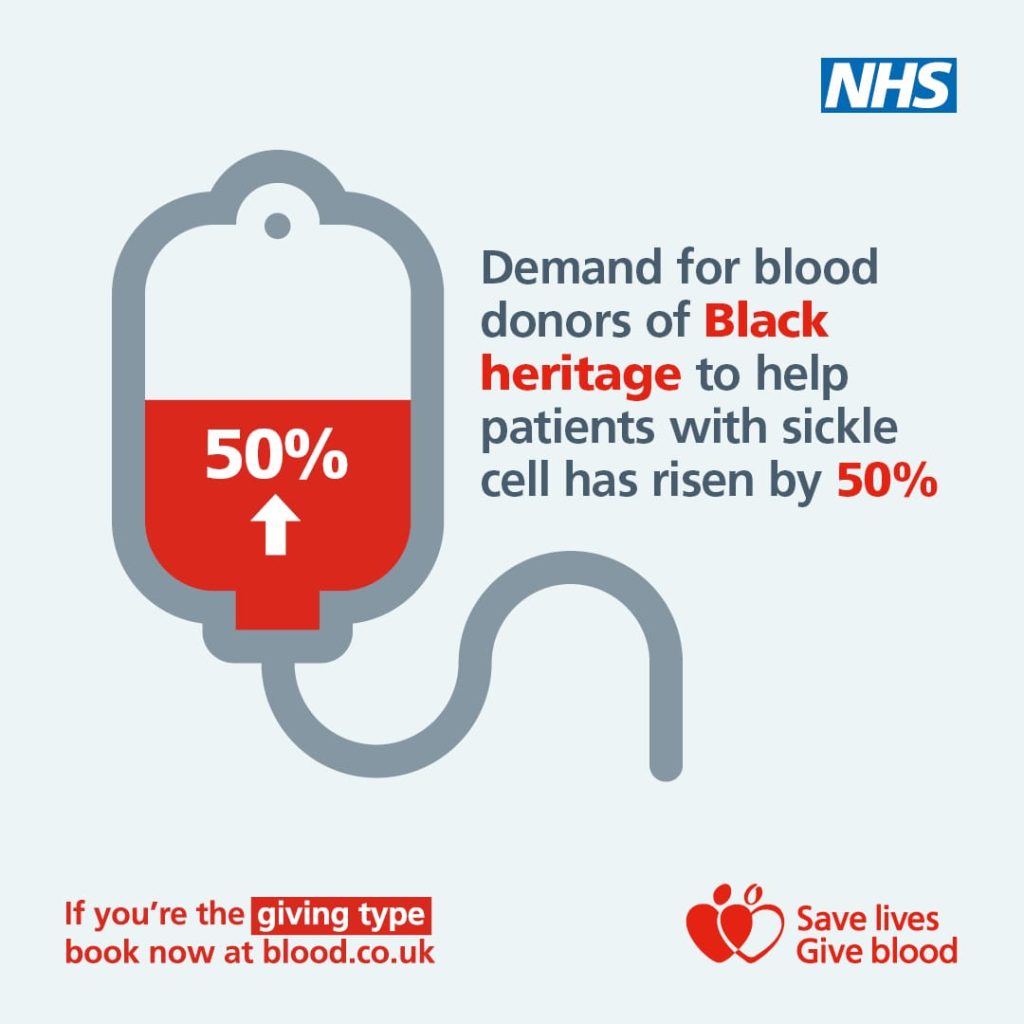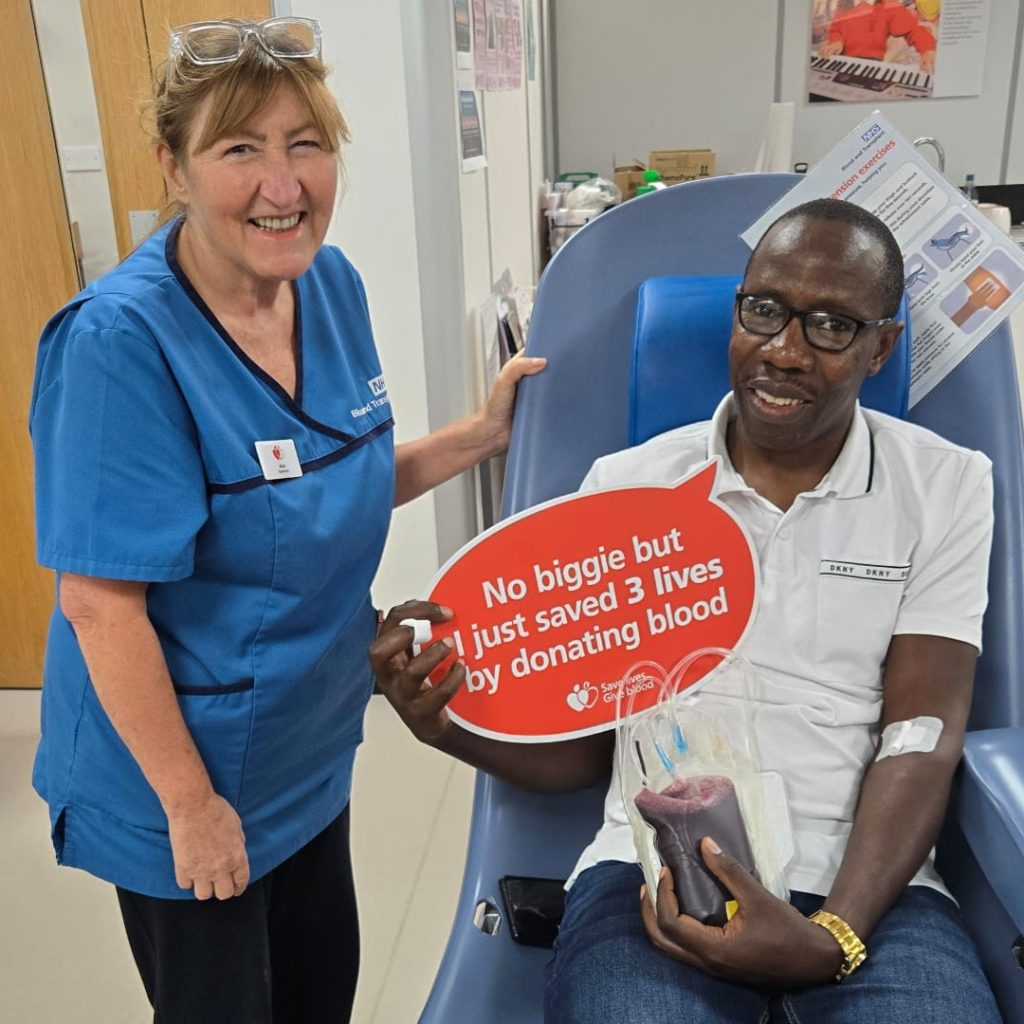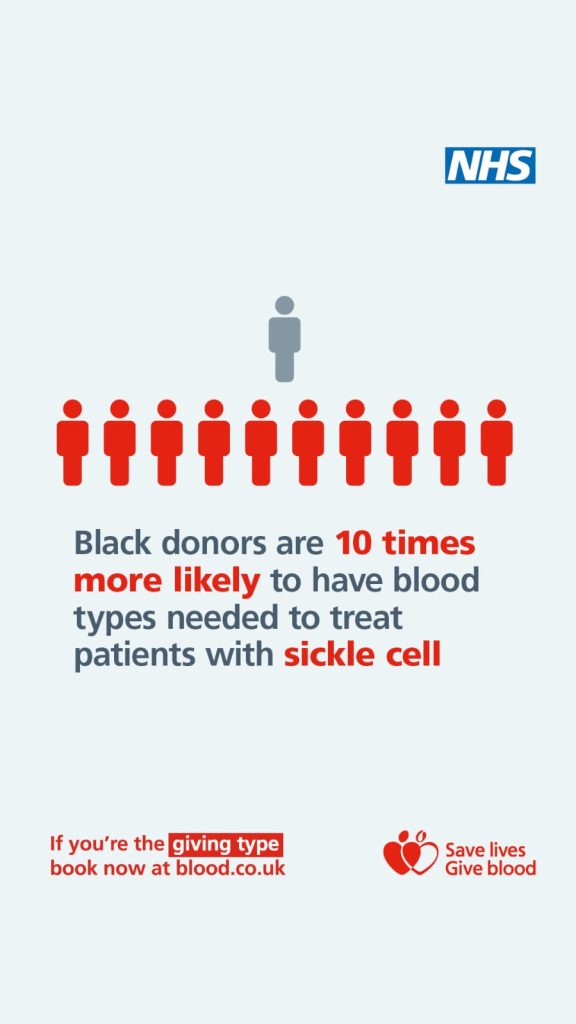
Sickle cell anaemia is a group of inherited red blood cell disorders that affect haemoglobin, the protein that carries oxygen through the body. Normally, red blood cells are disc-shaped and flexible enough to move easily through the blood vessels. In sickle cell disorder, red blood cells become crescent- or “sickle”-shaped due to a genetic alteration. These sickled red blood cells do not bend or move easily and can block blood flow to the rest of the body, causing damage to organs over time.
The blocked blood flow through the body can lead to serious problems, including stroke, eye problems, infections, and episodes of pain called pain crises.
Sickle cell is particularly common in people with an African or Caribbean family background.
People born with sickle cell disorder tend to have problems from early childhood, although some children have few symptoms and lead normal lives most of the time.
Causes of sickle cell disorder
1. Sickle cell disorder is caused by a gene that affects how long red blood cells live. A lack of oxygen causes the red cells to deteriorate faster.
2. If both parents carry the “trait” gene, there’s a 1 in 4 chance of each child they have being born with sickle cell disease.

Screening and testing for sickle cell
1. Sickle cell can be detected during pregnancy or 5 days after birth.
2. Screening for sickle cell in pregnancy is offered to all pregnant women of black heritage in England to check if there’s a risk of a child being born with the condition, and all babies are offered screening as part of the newborn blood spot test (heel prick test).
3. Blood tests can also be carried out at any age to check for sickle cell disease or see if you’re a carrier of the gene that causes it. Speak to your GP or head to your local Sickle Cell centre to arrange a test.
Treatments for sickle cell disorder
People with sickle cell disorder need treatment throughout their lives. Treatment mostly focuses on preventing and treating complications. This is usually delivered by different health professionals in a specialist sickle cell centre.
Outlook for sickle cell Disorder
Sickle cell disorder varies between individuals from mild to serious. People with Sickle Cell are at risk of complications such as stroke, acute chest syndrome, blindness bone damage and priapism. As well as damage to organs.
Mild sickle cell disorder may have no impact on a person’s day-to-day life.But the illness can be serious enough to have a significant effect on a person’s life. Main symptoms are anaemia and episodes of severe pain.
Carriers of sickle cell (sickle cell trait)
A carrier of sickle cell is someone who carries the gene that causes sickle cell but does not have sickle cell and typically won’t present with symptomsthemselves. It’s also known as having the sickle cell trait.
People with the sickle cell trait will not develop sickle cell disorder, but are at risk of having a child with it if their partner is also a carrier.
Our Goal
- To provide a platform for us to create Awareness, Education, and support one
another on issues relevant to Sickle Cell and blood donations mainly from Black Donors - Improve attitudes towards Sickle Cell in the workplace and schools and raise awareness to promote pathways to maximise potential.
- To ensure that people with Sickle Cell have the same equity of access to support, career progression and development opportunities as everybody else.

Blood
Donation
Everyone can make a difference whether your donation is used in an emergency, after surgery or as a part of a regular transfusion, you could help up to three adults and 6 children every time you give blood.

The need for more people of Black heritage to give
The increased demand for some rare blood subtypes, such as Ro, that are 10 times more common in people of Black heritage, and more likely to be used to treat Sickle Cell patients. This means we need more Black people to become blood donors.
Donors from Black heritage communities provide better matched blood to those who need it.
Demand for these subtypes is growing as more people have transfusions to treat blood disorders such as sickle cell.


